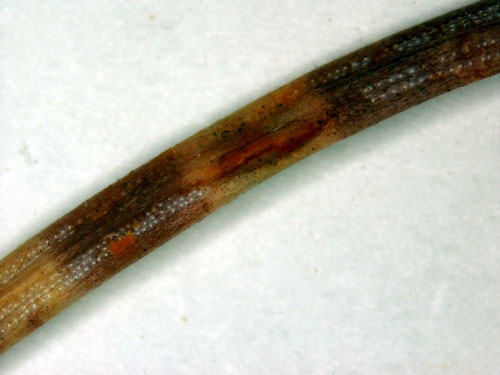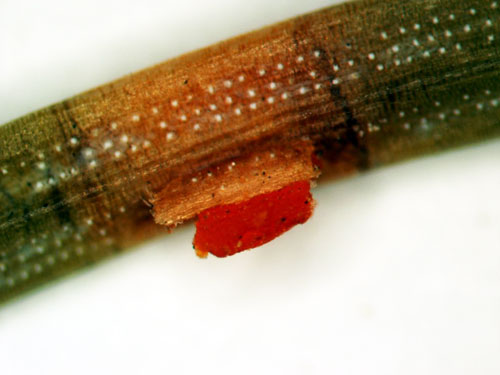Weir’s cushion rust identified in Michigan’s Upper Peninsula
Weir’s cushion rust is of greatest concern on Colorado blue spruce, where it can cause discoloration and pre-mature shedding of year-old needles.
Weir’s cushion rust (Chrysomyxa weirii) has been found in both eastern and western regions of the United States, but this is the first time we have identified it here in Michigan. Weir’s cushion rust is a needle disease that can disfigure and reduce the growth of spruce trees. Trees badly damaged will have thin crowns due to repeated loss of the previous year’s needle.
Weir’s cushion rust can infect most spruce species, but it is most commonly found on Colorado blue spruce. Unlike other rusts that we find on spruce, weir’s cushion rust does not have an alternative host. The fungus overwinters in needles infected during the previous growing season.
Needles on current year’s shoots may develop yellow spots or bands in the summer and fall. These spots and bands may intensify to give the tree a green and gold appearance during the spring when tiny, blister-like pustules (Photo 1) develop in the yellow areas. At bud break the blisters burst, releasing yellow-orange spores (Photo 2). Wind and splashing rain carry these spores to the emerging needles on the same tree or adjacent trees. The infection period can continue for two to three weeks and infection rate increases with high moisture. The disease cycle starts again with the newly infected needles harboring the rust fungus until bud break the following year. Previously infected needles continue to yellow, turn brown and fall off as spring and summer progress. Spores do not continue to be produced on dead needles.

Photo 1. In the spring, raised pustules on the needles are
visible with a hand lens.

Photo 2. The orange “blob” is a clump of spores that are
emerging from
the rust pustules. These spores can infect other spruce needles.
To prevent infections of the new needles, fungicides containing chlorothalonil should be made when 10 percent of the buds have broken and two additional applications should be made in seven to 10 day intervals. Fungicide application should continue until needles are mature or the symptomatic needles have dropped to the ground (approximately three to five sprays total).
Additional resources:



 Print
Print Email
Email


